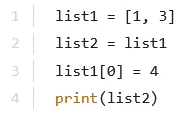PCEP – Certified Entry-Level Python Programmer
Here you have the best Python Institute PCEP-30-02 practice exam questions
- You have 471 total questions to study from
- Each page has 5 questions, making a total of 95 pages
- You can navigate through the pages using the buttons at the bottom
- This questions were last updated on December 13, 2025
- This site is not affiliated with or endorsed by Python Institute.




